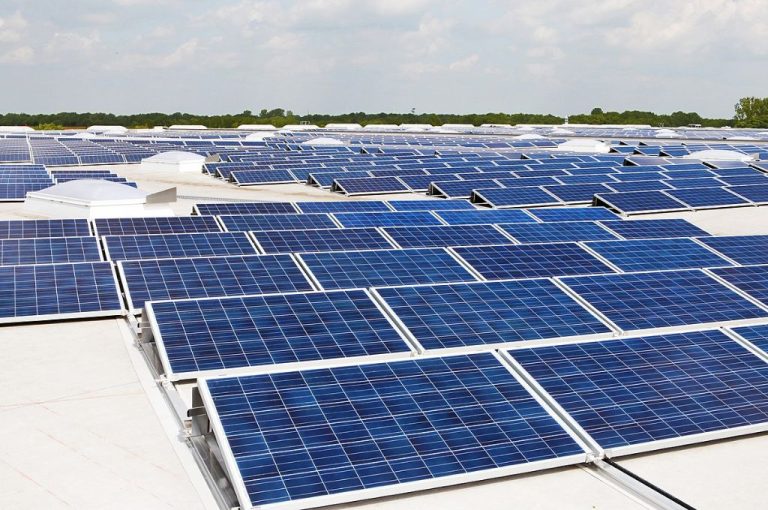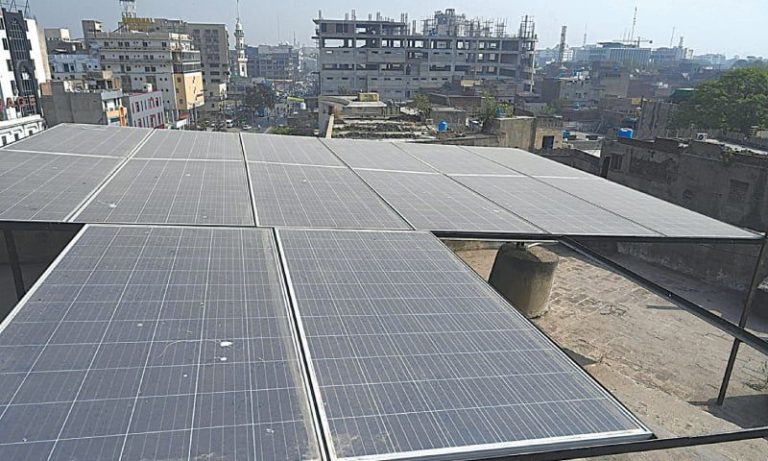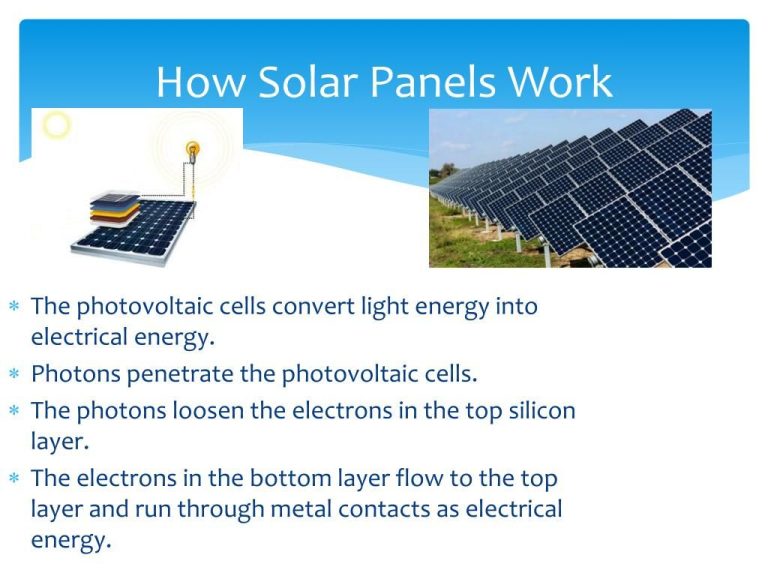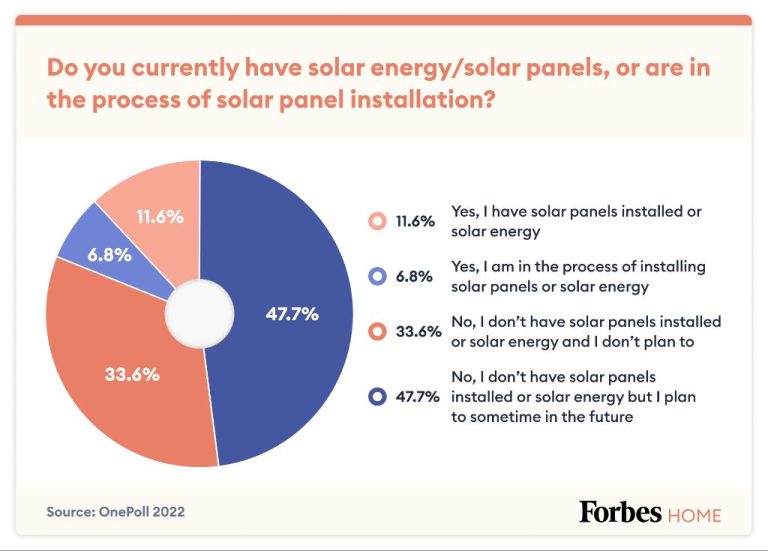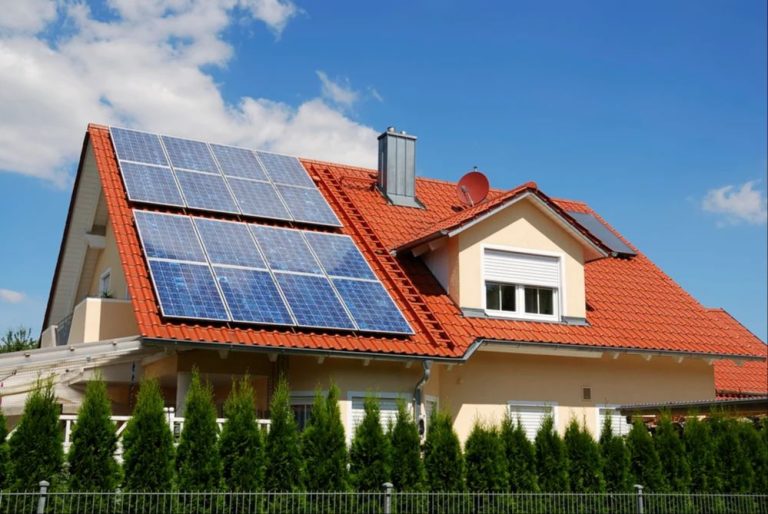Does Solar Need Sun Or Just Light?
How Solar Panels Work
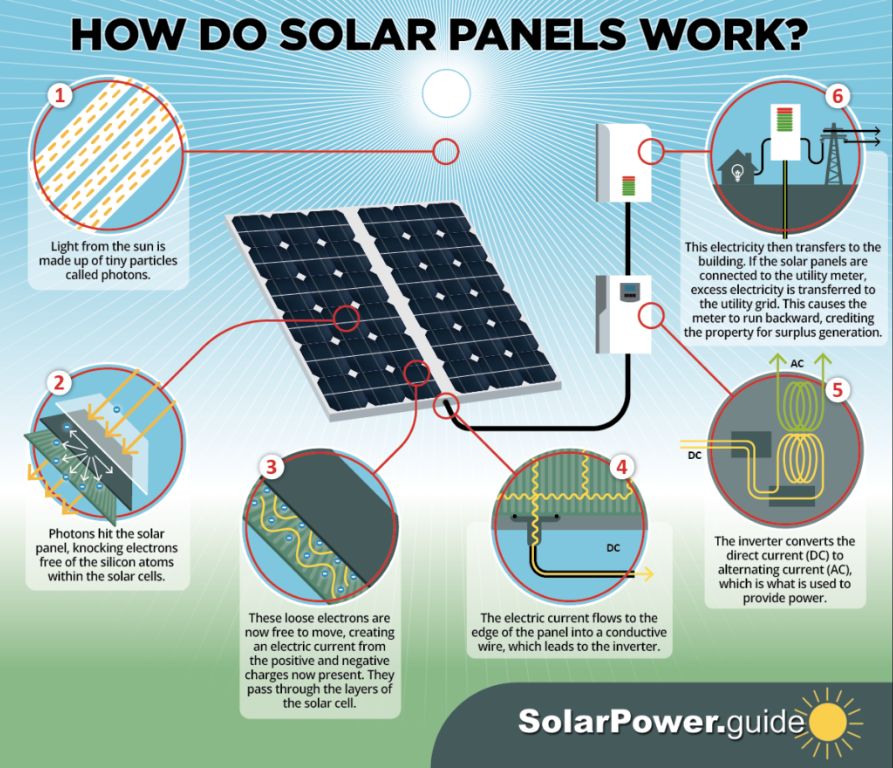
Solar panels work through the photovoltaic effect, which converts light into electricity. Solar cells inside the solar panel contain a semiconductor material, usually silicon, that absorbs photons from sunlight. When a photon hits the solar cell, its energy frees an electron from an atom in the semiconductor. The flow of these electrons produces an electric current that can be captured and used as electricity. The key is that the photovoltaic effect generates an electrical current whenever light shines on the solar panel, even on cloudy days or indoors under lights.
That means solar panels work using any light source that emits photons, not just direct sunlight. However, more intense sunlight with more photons produces more electricity. This is why solar panels work best on sunny days but still produce some electricity on cloudy days or with indoor lighting. The photovoltaic effect allows solar panels to turn light into electricity without any moving parts, giving them a simple and reliable design.
Difference Between Sunlight and Other Light
Sunlight is direct and intense, while other light sources like artificial lighting are less direct and intense. Solar panels are designed to convert the light energy from the sun into electricity. Sunlight shines directly onto the solar panels, and the photons in sunlight trigger the photovoltaic effect in solar cells, releasing electrons and generating an electric current. Artificial light is produced from light bulbs, lamps, or other light fixtures and does not shine directly at the intensity of sunlight (https://shopsolarkits.com/blogs/learning-center/can-solar-panels-work-with-artificial-light).
The light spectrum of sunlight is broader, containing more wavelengths of light including ultraviolet light, than man-made light sources. This allows sunlight to activate solar cells more efficiently. While artificial lights can generate some electricity, their illumination is diffuse rather than direct beams of light. They also lack the intensity and wide spectrum of sunlight (https://www.energymatters.com.au/renewable-news/is-it-possible-to-charge-solar-panels-without-sunlight/).
Testing Solar Panels Indoors
Solar panels can work indoors, but they produce less energy than when outdoors under direct sunlight. This is because solar panels are optimized to convert the high-intensity sunlight into electricity. When indoors, the light intensity is significantly reduced as it passes through windows, so less energy can be harvested. According to Power Films Solar, “Most PV is optimized to collect direct sunlight and may not work indoors. Minor material defects and impurities that do not affect outdoor performance could be an issue indoors.”1
That said, solar panels can still generate some electricity from indoor light. One test found that a 100W solar panel produced around 30W of power when placed in a bright indoor location near a window. The power output declines rapidly as the panel is moved further away from the window. While solar panels work more efficiently outside, they can be a viable power source for low-power indoor devices under the right conditions.
Key Factors for Solar Efficiency
There are several key factors that impact the efficiency of solar panels, whether used indoors or outdoors. Three of the most important are light intensity, wavelength, and angle of incidence.
Light intensity, or irradiance, refers to how much light power reaches the solar panel. More intense light provides more energy for the solar cells to convert into electricity. While sunlight outdoors can reach irradiance levels of 1000 watts/m2, indoor light is usually significantly less intense. Supplemental lighting can help boost indoor solar efficiency.
Light wavelength also affects efficiency, as solar cells are designed to absorb and convert certain wavelengths optimally. While the broad spectrum of natural sunlight contains suitable wavelengths, indoor lighting may skew more towards certain colors. Blue light tends to provide the most energy.
Finally, the angle of light incidence impacts efficiency. When light hits the solar panel perpendicularly, more energy is absorbed versus a more angled or indirect light source. Tilting panels can help optimize the angle both indoors and outdoors.
Outdoor vs Indoor Solar
Solar panels are commonly installed outdoors to maximize exposure to direct sunlight. However, they can also generate electricity indoors near windows or under supplemental lighting. While outdoor solar panels are capable of higher energy output, indoor panels provide more flexibility for residential and commercial applications.
Outdoor solar panels are designed and rated for natural sunlight conditions. Most standard panels are optimized for peak performance at 25% sun intensity or higher. Their power output depends on sun exposure and angle. At noon on a clear day, an outdoor 250W solar panel in full direct sunlight may produce up to 250W. The same panel indoors near a bright window may only generate 50-80W. Outdoor panels are also affected by weather and seasons, producing less energy on cloudy days or at higher latitudes.
Indoor solar panels are rated for lower light levels, such as 200-1000 lux. With supplemental LED lighting, some indoor panels are capable of nearing their full rated output. While power production is more consistent, it is lower than ideal outdoor conditions. However, indoor solar provides advantages like physical protection, adjustable placement, and integration into buildings.1 With improvements in efficiency, indoor solar can be a viable option for many applications.
Supplemental Lighting Options
While solar panels are designed to convert sunlight into electricity, relying solely on the sun limits energy production at night or on cloudy days. This is where supplemental lighting can boost solar output. Artificial grow lights or LEDs can provide additional light to solar panels when sunlight is insufficient (https://www.omnipv.com/solar-light). The most common form of supplemental lighting for solar panels is LED grow lights. LEDs are energy efficient and can prolong the light exposure for solar panels (https://www.ledgrowlightsdepot.com/collections/supplemental-lighting). Using artificial lighting to supplement natural sunlight allows solar panels to achieve greater power generation. Strategically placed LED grow lights focused on the solar cells can optimize energy production.
Example Indoor Installations
Solar panels can be utilized in indoor spaces that receive adequate ambient light, such as greenhouses, atriums, and windows. Indoor solar panels are often installed in greenhouses to help power fans, lights, and other electrical equipment. The filtered sunlight passing through the greenhouse glass provides enough energy for solar panels to generate usable electricity.
Atriums and sunrooms outfitted with solar panels take advantage of large amounts of natural light entering the space through skylights and windows. Positioning solar panels near these light sources allows them to absorb both direct and indirect sunlight. A recent installation at an atrium in Singapore powers light fixtures using solar panels mounted on support beams near glass ceiling panels.
Some solar panel window films and shades can be applied directly onto existing windows to turn them into solar collectors. These discretely capture sunlight from the window exposure while still allowing visibility. Window solar panel systems work best for south-facing windows in sunny climates but can produce supplemental energy even on north-facing windows.
Future Advances in Solar Tech
Much research is currently focused on improving the efficiency of solar panels in low-light conditions. For example, scientists at Ambient Photonics have developed a new kind of solar cell that can generate electricity from ambient indoor light (Ambient Photonics). Whereas traditional solar panels need direct sunlight to operate efficiently, Ambient’s cells use organic semiconductors that are specially designed to absorb light wavelengths present indoors. In testing, these low-light solar cells generated enough electricity to power small electronic devices using just room lighting.
Researchers are also working on improving the low-light efficiency of traditional silicon solar cells. At Princeton University, scientists added a light-trapping nanoscale design to silicon cells, which allowed them to absorb light from wider angles (Science Magazine). This enhancement boosted the cells’ efficiency by more than 30% in low-indoor light. With continuing advances, solar panels may become a viable indoor power source in the not-too-distant future.
When to Choose Indoor Solar
Indoor solar panels can be a great option for certain niche applications or situations where traditional rooftop solar isn’t feasible. Here are some examples of good use cases for indoor solar technology:
Indoor solar can help power small devices and sensors as part of an Internet of Things network. The low-power requirements of smart home devices makes them ideal to run off indoor solar. This avoids the need to wire each device to the electrical system.
For homes or buildings without optimal roof space or sunlight exposure, indoor solar lets you harvest light through windows. This makes solar an option even in dense urban areas without roof access.
Specific rooms like garages or utility rooms that don’t get much natural light can benefit from a dedicated indoor solar panel installation. The solar energy can power lights, tools, electric vehicle chargers and other equipment in that room.
Portable indoor solar panels are great for camping, RVs, and other applications where mobility and flexible setup is important. They allow you to generate solar electricity on the go.
Overall, anywhere that traditional solar isn’t practical but you still want to harness the power of light, indoor solar panels can fill that niche.
Conclusion
In summary, solar panels do not require direct sunlight in order to generate electricity. They can produce power from any light source, though sunlight is often the most efficient and cost-effective option. Indoor solar installations are viable using supplemental lighting, but currently have limited applications and higher costs compared to traditional outdoor solar. However, emerging solar technologies that can harvest energy from indoor light fixtures and ambient indoor light are poised to make indoor solar more practical in the future.
When evaluating solar for an indoor application, factors like light levels, shadows, panel costs, electricity needs, and return on investment should be considered. For most situations requiring significant power generation, outdoor solar systems remain the recommended approach to harness sunlight. Indoor solar is best reserved for niche applications like powering small electronics or demonstrations until the technology progresses further. Those pursuing off-grid living may also find creative ways to utilize indoor solar along with other renewable sources.
In the coming years, continuing innovation in solar efficiency, energy storage, and lighting may open up new possibilities for indoor solar to complement traditional outdoor solar installations. But for now, direct sunlight remains the prime ingredient for effective solar power generation in residential and commercial settings.

